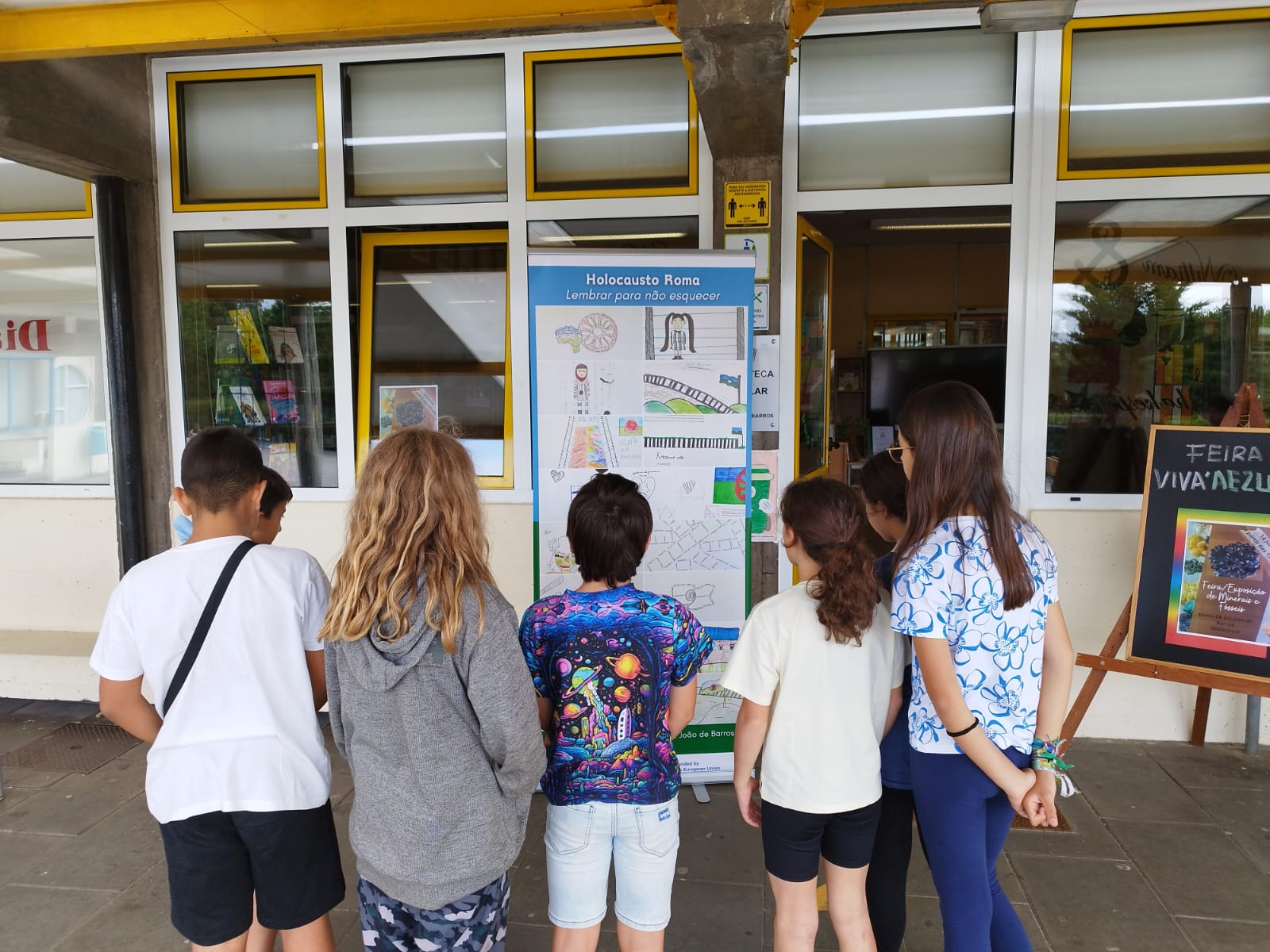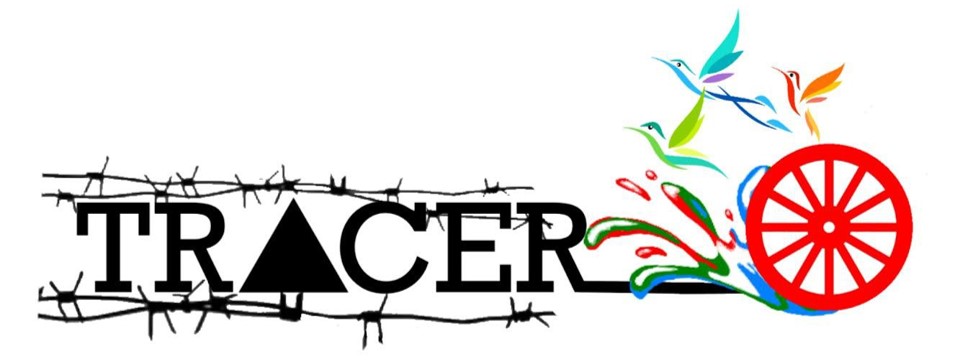The development of the project led local groups to involve several classes of students aged 12 to 16 in a didactic workshop on the genocide of the Roma and Sinti people during World War II.
During the workshop (10 hours for each class), the different local groups designed participative and interactive ways to involve and engage students, using videos and direct testimonies, interviews with members of the Roma and Sinti community, as well as the young leaders' narration of their trip and experience in Auschwitz-Birkenau.
Each didactic workshop ended with a public performance or presentation of the work done by the students to peers and adults (teachers, parents and citizens).
- In Portugal, in Figueira da Foz, the young people presented the drawings resulting from their involvement in the workshops at the João de Barros school fair. In Braga, the artefacts and drawings produced by the students during the didactic workshops were shown at school in an exhibition on Holocaust, discrimination and racism. The exhibition is open to the entire educational community (teachers, parents, students' families and people from the neighbourhood).
- In Poland, the students of Zabrze, visited the permanent exhibition on Roma Culture at the Centre of Roma History and Culture in Oświęcim.
- In Italy, in Bologna, the students contributed to the preparation and presentation of the photographic exhibition "Porrajmos the forgotten extermination of the Romani", acting as guides for visitors to the exhibition. In Florence, the students were guided to visit the Museum of Deportations, and contributed with ideas and reflections to an event which was attended by experts on the subject (including Luca Bravi, Pino Petruzzelli and some young leaders). In Naples, on the other hand, the workshop was aimed at creating a video using the stop motion technique. In the video, entitled "Vita da Rom" (Roma life), the young people recounted commonplaces and prejudices associated with the Roma, gradually replacing them with a common glossary built through dialogue and discussion with some young Roma peers.

